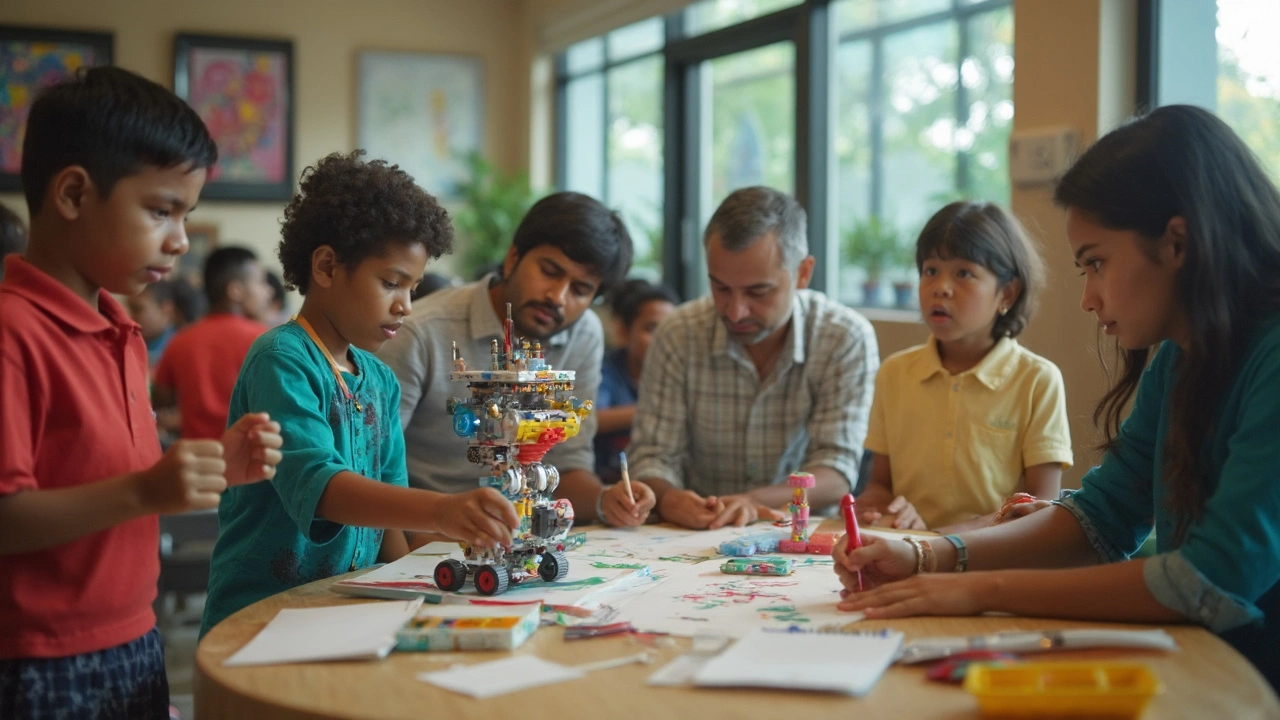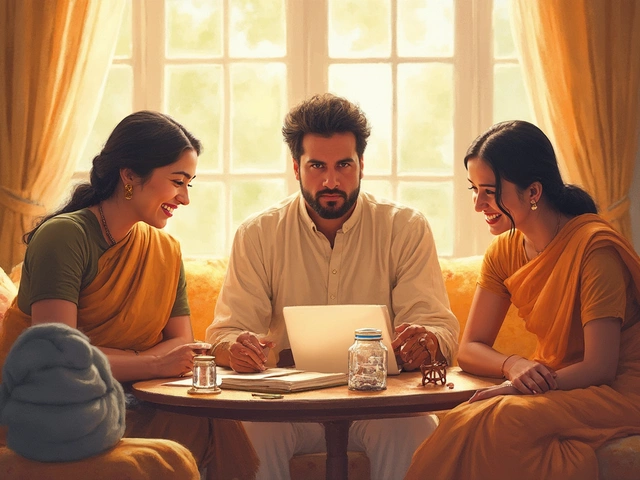It’s not just violin and soccer anymore—if you peek inside the calendars of wealthy kids, you’ll spot lessons straight out of a Netflix docuseries. Think fencing bouts, sailing classes, Mandarin tutors, and coding bootcamps. These aren’t just hobbies. For families with resources, after-school clubs have become a real investment, focused on future resumes and connections as much as fun.
These exclusive lessons often come with eye-watering price tags, but there’s a reason behind the spending. Parents aren’t just hoping their kid will be the next Elon Musk or Serena Williams. They’re betting on activities that teach strategy, confidence, and that all-important social savvy. Ever wonder why private schools have debate teams and polo clubs instead of just chess? It’s all about building networks and giving kids that extra something when it comes time for college apps or job interviews.
- Beyond Sports: Elite Activities
- Money Talks: How Access Shapes Choices
- Inside the Most Popular Clubs
- What Skills Do These Kids Gain?
- Ways to Level the Playing Field
Beyond Sports: Elite Activities
When you flip through the schedules of rich kids, it’s wild how fast you run into activities that aren’t even on the radar for most families. Sure, sports like soccer and basketball are popular everywhere, but in high-income circles, after-school time branches way out. You’ll find fencing, equestrian lessons, sailing, and even squash—which, fun fact, is a must-have club at many prep schools on the East Coast.
If you think this is just about having fun, it’s only part of the story. These after-school clubs are often chosen because they’re packed with perks: exclusive networks, discipline, and even Ivy League appeal. There’s a real strategy behind why so many wealthy parents send their kids to robotics competitions or Mandarin immersion camps. These activities look great on college applications—and some selective schools even give a quiet nod to rare sports like fencing or rowing, since those are underrepresented and make admissions offices take notice.
Take a look at this quick comparison of activities you’ll see at exclusive private schools versus what public schools might offer:
| Elite Private School Activities | Typical Public School Activities |
|---|---|
| Polo, Fencing, Squash, Sailing | Basketball, Soccer, Band, Drama |
| Model United Nations, Coding Bootcamps | Art Club, Debate, Choir |
If you’re wondering about costs, sailing lessons can easily run $100-200 per session, and private Mandarin tutors sometimes cost $60+ per hour. The price isn’t just for the skill—it’s for the access, too. It’s not unusual for these clubs to double as networking hubs, with parents connecting over shared interests just as much as their kids.
An interesting insight: The U.S. Fencing Association found that about 80% of youth competitors come from households with above-average income. This isn’t a coincidence—it reflects who can pay for the gear, travel, and coaching. For many rich kids, these activities become a launchpad, opening doors to “hidden” scholarships or internships that often skip past most families’ radars.
So if you ever hear about a kid spending their afternoon dragon-boating or prepping for a UN simulation, you’re catching a glimpse of the world of elite lessons—where the extras are often the real ticket to future opportunity.
Money Talks: How Access Shapes Choices
The big reason certain after-school clubs pop up only in elite circles? It’s straight-up about access. When you’ve got resources, the door opens to a totally different world of enrichment. You’ll see rich kids enrolled in things like private horseback riding lessons or robotics programs that run thousands of dollars a semester. Public schools might have band or soccer, but activities like polo, squash, or coding in a Silicon Valley-inspired lab? Those are rare unless you’ve got funds and the right zip code.
Location and school choice play a big part, too. Private schools and exclusive community centers often offer clubs that public schools can’t touch, simply because of budget gaps or lack of connections. Even something like debate club looks different—wealthy families often pay for national-level debate coaches or send their kids to special summer intensives that cost more than some families spend in a year on activities.
Here’s where it gets wild: money also lets families fit these activities right into a kid’s schedule without the normal headaches. Car services and nannies make it possible to squeeze in fencing, Mandarin, tennis, and piano all on a Tuesday. Let’s break this down with some real numbers.
| Activity | Typical Monthly Cost (US) |
|---|---|
| Private Fencing Lessons | $400-$800 |
| Horseback Riding | $600-$2000 |
| After-School Coding Lab | $300-$1200 |
| Elite Debate Coaching | $500-$1500 |
That’s not even counting travel, gear, or tournament costs. So, it’s not just about signing up—it’s about all the support behind it, from tutors to drivers. The result? Rich kids try out more enrichment activities, build unique skills, and sometimes, rack up trophies without worrying about access or money. That shapes the whole playing field in a big way.

Inside the Most Popular Clubs
If you've got your eye on what rich kids are up to after the school bell rings, some clubs instantly stand out. We're not talking about your basic after-school soccer league either. These activities are all about building big skills, elite networks, and a major edge when it comes to future opportunities.
Fencing is a big one—even if only a handful of schools offer it. Why fencing? It's strategic, individual, and just rare enough to grab attention on a college resume. Urban fencing studios in cities like New York and San Francisco have seen enrollments spike in the last five years, with about 70% of their students coming from households earning over $250k a year.
Then there’s debate club, always packed at elite private schools. This isn’t just about arguing—it’s about learning to research, think on your feet, and sound confident. Top prep school debate teams across the U.S. routinely win national tournaments, and alumni often move on to Ivy League schools. If you’re curious, competitive debate tournaments have grown so much that one national circuit now sees over 3,000 participants every season, with a good chunk from the top 10% of income brackets.
Polo and sailing clubs feel almost out of reach for most families, but they’re major in certain circles. The gear alone can cost thousands a season. But for families who see these clubs more as networking grounds than hobbies, it’s worth every penny. Yacht clubs that offer junior sailing lessons sometimes have waitlists a year long, and spots are given to member families (translation: wealthier kids).
Tech matters now more than ever. So, coding bootcamps and robotics clubs are growing fast, especially among rich kids. Some exclusive camps cost $1,000+ for just a week, but they promise skills that look great to college admissions officers and future employers. And let’s be honest, building a robot or designing an app at age 12 is a solid party trick.
Here’s a quick look at what’s trending among high-income families:
- Mandarin language immersion (plus international exchange trips)
- SAT prep—starting in middle school
- Volunteering, but with high-profile nonprofits
- Entrepreneurship clubs (think actual mini start-ups, with mentors from the parents’ social circle)
- Private art or music lessons with top instructors
Meanwhile, even clubs you’d expect (like swim teams or theater) often come with a twist—like taking private lessons from former Olympians or Broadway actors. In these after-school clubs, what you get out often matches what you’re able to put in—cash, connections, or both.
| Club | Typical Annual Cost | Key Skills Learned |
|---|---|---|
| Fencing | $3,000 - $10,000 | Strategy, focus, discipline |
| Sailing | $5,000 - $20,000 | Teamwork, leadership, technical skill |
| Debate | $2,000 - $7,000 | Critical thinking, public speaking |
| Coding Camps | $1,500 - $8,000 | Problem solving, creativity, tech |
So if you’ve got dreams of these clubs, don’t count yourself out yet—plenty have scholarships or try-outs. But knowing the playing field lets you spot what’s really going on after school in the world of elite lessons.
What Skills Do These Kids Gain?
One thing standing out about rich kids and their after-school clubs: these lessons aren’t just about getting good at tennis or the violin. They’re designed to build a toolkit of practical and even powerful life skills. Private fencing lessons, for example, teach focus and split-second decision-making—stuff you can’t just pick up from a textbook. Coding clubs and STEM camps help them grow into problem-solvers, not just tech-savvy kids.
Debate teams are a big one. They push kids to speak up confidently, see both sides of an argument, and think on their feet. These skills make interviews or presentations a breeze later on. Even the posh sports—sailing, polo, or golf—have a hidden side: they’re all about strategy, teamwork, and practicing social grace in high-end circles.
There’s also a lot of buzz around language tutors, especially Mandarin or Spanish. Why? Families know that speaking another language can open up travel, friendships, and jobs. Even Forbes pointed out that bilingual kids have better focus and multitasking skills.
- Networking: Clubs and activities help build early connections, sometimes with future business leaders or influencers.
- Leadership: Running club events or captaining sports teams helps them learn to take charge (and not just follow instructions).
- Cultural Awareness: From Model United Nations to international cooking classes, these kids get exposed to different cultures and big world ideas.
- Time Management: Balancing homework with travel team soccer and coding class teaches serious planning skills.
- Confidence: Mastering tough challenges—whether that’s a musical solo or a hackathon—gives kids real self-assurance.
| Club/Activity | Main Skill Developed |
|---|---|
| Debate | Critical thinking, public speaking |
| Sailing | Teamwork, resilience |
| STEM Clubs | Problem-solving, tech literacy |
| Foreign Languages | Global fluency, multitasking |
| Polo/Tennis | Strategy, social skills |
The bottom line? These enrichment activities stack up useful, resume-ready skills—they go way beyond filling an afternoon. And that’s why after-school clubs and enrichment activities aren’t just an add-on for rich kids: they’re almost a launchpad to bigger opportunities down the line.

Ways to Level the Playing Field
It’s easy to see how the gap widens when only some kids can do fencing or coding after school. But that doesn’t mean these high-quality after-school clubs are totally out of reach for everyone. There are plenty of savvy ways to get your kids—or even yourself—access to the same kind of enrichment rich kids enjoy, without the big price tags.
Community centers and libraries are goldmines for free or low-cost programs. In 2024, over 60% of major U.S. cities reported offering public STEM clubs, including robotics, at local branches. The YMCA and Boys & Girls Clubs often roll out classes in languages, music, and leadership that mirror the pricier private options—just without fancy marketing.
- Check city or school district websites for grant-funded classes in areas like coding or art. Sometimes, local tech companies sponsor these lessons and even provide gear.
- Don’t overlook online platforms. Loads of organizations, like Khan Academy and Code.org, give kids free access to lessons in everything from creative writing to computer programming. Some public libraries even lend out musical instruments or STEM kits.
- Parents’ groups, neighborhood Facebook pages, and even Reddit can connect you to low-cost or share-based meetups—think chess clubs or book circles that rotate homes or public parks.
- Scholarships aren’t just for college. Even big names like the Juilliard School or debate summer camps give out need-based spots. You just have to apply early and keep an eye on those deadlines.
If your kid has a specific interest—like Mandarin, fencing, or leadership—search for nonprofit programs. In many cities, groups like Girls Who Code, FIRST Robotics, and Debate League wave fees for low-income families. And don’t be afraid to ask for financial aid even if it isn’t advertised; lots of providers set aside a few spots for scholarships without publicizing it.
For a quick comparison, check this table to see where families are finding low-cost versions of some top enrichment activities:
| Activity | Typical Elite Cost | Low-Cost Alternative |
|---|---|---|
| Coding Bootcamp | $500+/week | Code.org (Free) |
| Fencing | $100/session | Community/School Club ($10/session) |
| Piano Lessons | $80/hour | Library Music Lab (Free with card) |
| Robotics | $2,000/team | FIRST Robotics (Sliding scale/free at some schools) |
The big takeaway: You don’t have to be rolling in cash to tap into the life skills that come from great after-school clubs. A little internet detective work, some asking around, and a willingness to try community options can open the doors that seem locked to most. And if you’re not seeing something in your area, don’t be shy about teaming up with other parents to get a club started from scratch. Sometimes, the best opportunities are the ones you build yourself.





